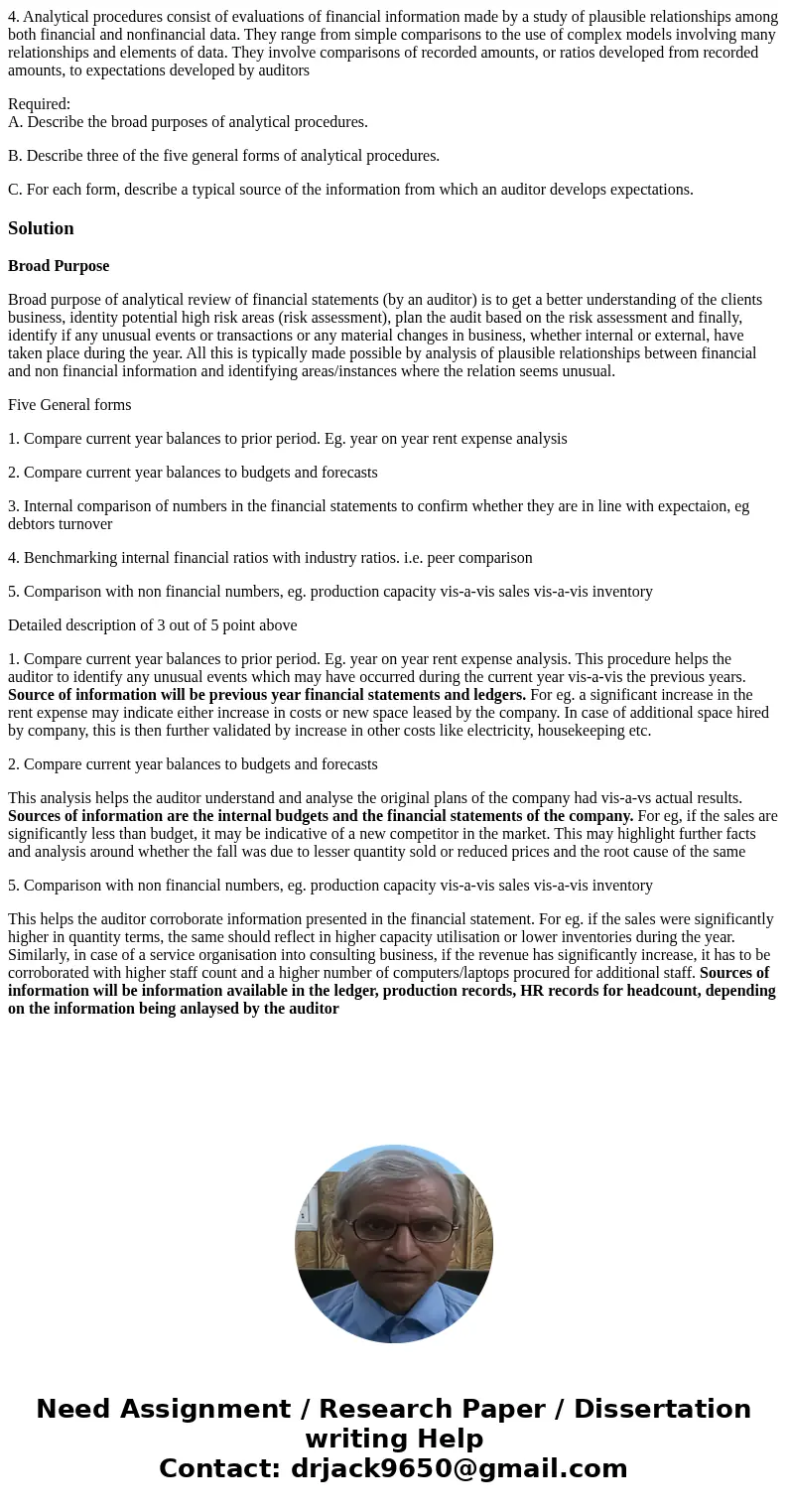4 Analytical procedures consist of evaluations of financial
4. Analytical procedures consist of evaluations of financial information made by a study of plausible relationships among both financial and nonfinancial data. They range from simple comparisons to the use of complex models involving many relationships and elements of data. They involve comparisons of recorded amounts, or ratios developed from recorded amounts, to expectations developed by auditors
Required:
A. Describe the broad purposes of analytical procedures.
B. Describe three of the five general forms of analytical procedures.
C. For each form, describe a typical source of the information from which an auditor develops expectations.
Solution
Broad Purpose
Broad purpose of analytical review of financial statements (by an auditor) is to get a better understanding of the clients business, identity potential high risk areas (risk assessment), plan the audit based on the risk assessment and finally, identify if any unusual events or transactions or any material changes in business, whether internal or external, have taken place during the year. All this is typically made possible by analysis of plausible relationships between financial and non financial information and identifying areas/instances where the relation seems unusual.
Five General forms
1. Compare current year balances to prior period. Eg. year on year rent expense analysis
2. Compare current year balances to budgets and forecasts
3. Internal comparison of numbers in the financial statements to confirm whether they are in line with expectaion, eg debtors turnover
4. Benchmarking internal financial ratios with industry ratios. i.e. peer comparison
5. Comparison with non financial numbers, eg. production capacity vis-a-vis sales vis-a-vis inventory
Detailed description of 3 out of 5 point above
1. Compare current year balances to prior period. Eg. year on year rent expense analysis. This procedure helps the auditor to identify any unusual events which may have occurred during the current year vis-a-vis the previous years. Source of information will be previous year financial statements and ledgers. For eg. a significant increase in the rent expense may indicate either increase in costs or new space leased by the company. In case of additional space hired by company, this is then further validated by increase in other costs like electricity, housekeeping etc.
2. Compare current year balances to budgets and forecasts
This analysis helps the auditor understand and analyse the original plans of the company had vis-a-vs actual results. Sources of information are the internal budgets and the financial statements of the company. For eg, if the sales are significantly less than budget, it may be indicative of a new competitor in the market. This may highlight further facts and analysis around whether the fall was due to lesser quantity sold or reduced prices and the root cause of the same
5. Comparison with non financial numbers, eg. production capacity vis-a-vis sales vis-a-vis inventory
This helps the auditor corroborate information presented in the financial statement. For eg. if the sales were significantly higher in quantity terms, the same should reflect in higher capacity utilisation or lower inventories during the year. Similarly, in case of a service organisation into consulting business, if the revenue has significantly increase, it has to be corroborated with higher staff count and a higher number of computers/laptops procured for additional staff. Sources of information will be information available in the ledger, production records, HR records for headcount, depending on the information being anlaysed by the auditor

 Homework Sourse
Homework Sourse